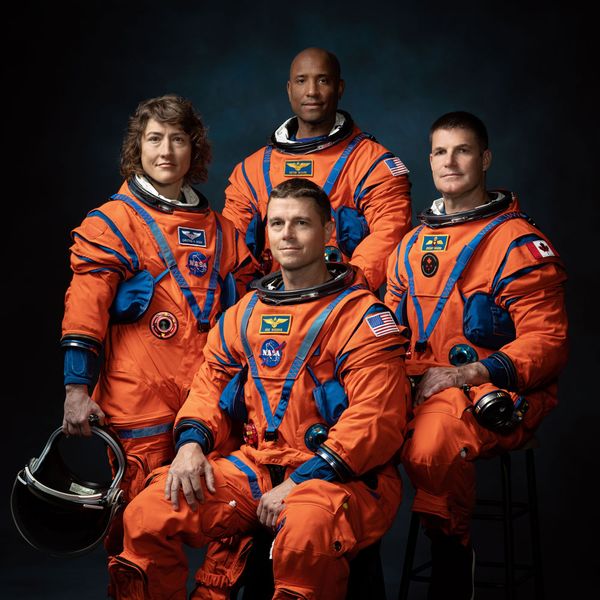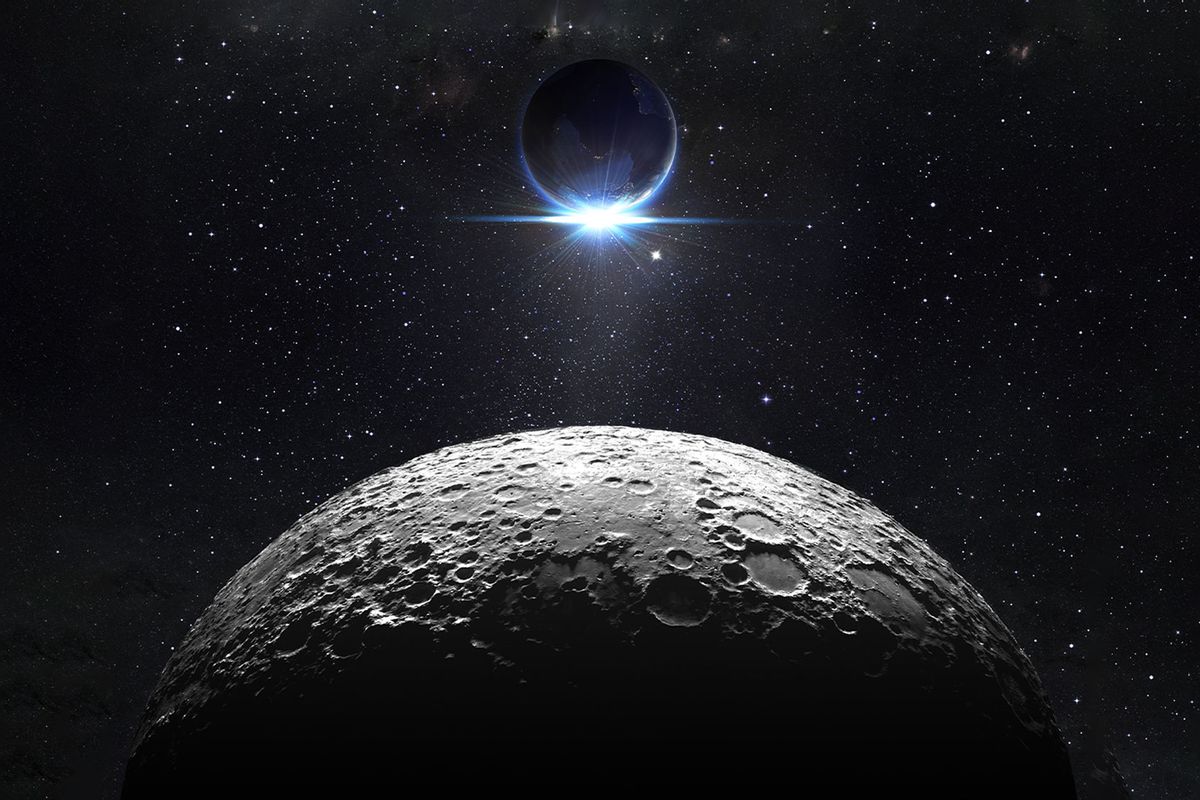More than half a century has passed since December 1972, when Apollo 17 astronauts landed on the Moon. That mission was the last crewed mission to the Moon and the last time that humans orbited the Moon.
Glover stated that "we need to celebrate this moment in human history" as "the next step in the journey that will get humanity to Mars."
At least, that will be the case until November 2024, when NASA plans to launch the first human mission to the Moon since Apollo 17. Known as Artemis II, the mission will be akin to the early Apollo efforts like Apollo 7 and Apollo 8 in which astronauts circled around the Moon, but did not land on it. On Monday, NASA announced for the first time the identities of the astronauts who will make history in 2024. The roster includes several historic firsts.
Navy aviator Victor Glover, who was chosen by NASA to pilot Artemis II and who has successfully performed four spacewalks, is the first African American to ever go to a lunar mission. Glover will be joined by engineer Christina Koch, a fellow NASA spacewalk veteran who participated in the longest continuous spaceflight by a woman. Another precedent is being broken by Jeremy Hansen, a Royal Canadian Air Force colonel who will be the first Canadian to participate in a lunar mission. Finally, they will be joined by the mission commander, former U.S. Navy fighter pilot Reid Weisman.
 The crew of NASA's Artemis II mission (left to right): NASA astronauts Christina Hammock Koch, Reid Wiseman (seated), Victor Glover, and Canadian Space Agency astronaut Jeremy Hansen. (NASA)NASA held a press conference announcing the quartet that would crew Artemis II. While Glover, Koch, Hansen and Weisman were the stars of the show, NASA Administrator Bill Nelson emphasized to the gathered journalists that a team of thousands of astronomers, engineers and other scientific experts played crucial roles in turning the mission into a reality.
The crew of NASA's Artemis II mission (left to right): NASA astronauts Christina Hammock Koch, Reid Wiseman (seated), Victor Glover, and Canadian Space Agency astronaut Jeremy Hansen. (NASA)NASA held a press conference announcing the quartet that would crew Artemis II. While Glover, Koch, Hansen and Weisman were the stars of the show, NASA Administrator Bill Nelson emphasized to the gathered journalists that a team of thousands of astronomers, engineers and other scientific experts played crucial roles in turning the mission into a reality.
"The Artemis II crew represents thousands of people working tirelessly to bring us to the stars," Nelson told the crowd on Monday. "This is humanity's crew."
Want more health and science stories in your inbox? Subscribe to Salon's weekly newsletter The Vulgar Scientist.
If there is one major detail that distinguishes this lunar mission from its 20th century predecessors, it can be summed up by a single statement from Glover. In answer to one reporter's question, Glover stated that "we need to celebrate this moment in human history" as "the next step in the journey that will get humanity to Mars" — and not, as was the case with the previous lunar missions, as an expedition that solely prioritized learning more about the Moon itself. NASA ultimately hopes to send human beings to Mars, and it is widely believed among scientists that establishing a stable presence on the Moon is the critical first step toward that happening.
The Artemis II mission will set a precedent for sending humans beyond low-Earth orbit for the first time in a half-century
Though Artemis is not Mars-bound, the Artemis II mission will set a precedent for sending humans beyond low-Earth orbit for the first time in a half-century — which is important given that, in the past fifty years, few crewed rockets that can go beyond low-Earth orbit have been developed. More broadly, the Artemis program is geared toward creating a sustainable human presence both in orbit around and on the surface of the Moon. To that end, NASA plans to build a space station known as Gateway as a stop between Earth and the lunar surface. NASA also hopes to establish a long-term human presence near the lunar South Pole, which is believed to be more potentially hospitable to life.
The Artemis II mission itself will only involve the four astronauts being strapped into the Orion spacecraft and orbiting around the Moon. The entire mission is expected to last for 10 days and conclude with a splashdown landing in the Pacific Ocean.
While advocates of manned space exploration are celebrating the new NASA budget and its objectives, not everyone is happy. Last week NASA, announced that it was cutting the budget for one of its unmanned Venus-based missions down to the bone. Noam Izenberg, a planetary scientist at Johns Hopkins University Applied Physics Laboratory and Chair of NASA's Venus Exploration Analysis Group (VEXAG), told Salon by email at the time that he finds the decision to delay to be "extremely disappointing" and "far from optimum," but added that "there are compelling reasons (for science, workforce, and budget) to move it back up to a late 2029 launch," as NASA stated was necessary for financial and logistical reasons.



Shares